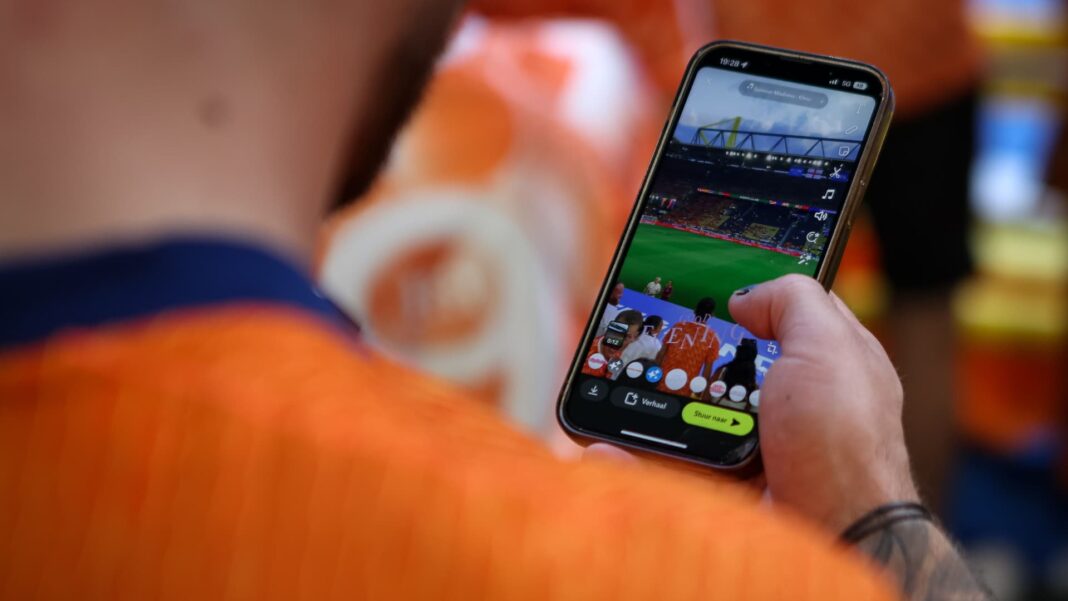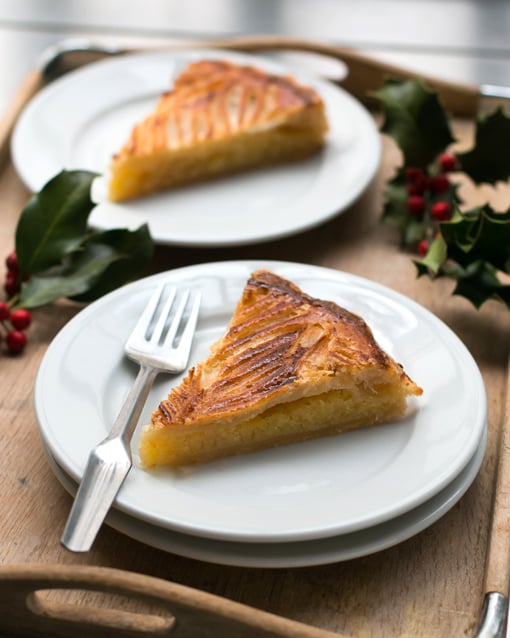A soccer fan posts a video on social media during the UEFA Euro 2024 semi-final.
Inaki Esnaola | Getty Images Sport | Getty Images
The world of live sports is undergoing a transformation as people use more screens to curate their own broadcast experiences.
Today, a vast majority of sports fans say they use second screens during live broadcasts, as they discuss the game with friends or check social media. A growing number of younger fans, meanwhile, are turning to video platforms to watch highlights, listen to live influencer commentaries and engage in communities built around sport.
YouTube has been one of the biggest beneficiaries. The platform, owned by Google-parent Alphabet, saw sports content viewing increase 45% in 2024 as people searched for highlights of the Paris Olympics and tuned in for YouTube’s exclusive NFL coverage on Sundays.
Content creators such as Mark Goldbridge, a British streamer who hosts live “watchalongs” of Premier League soccer matches on YouTube, have helped the platform provide alternative sports experiences.
“People aren’t just watching Sky Sports at half past four anymore, they’re multitasking,” Goldbridge told CNBC, referring to Europe’s top sports broadcaster. “They’re engaging in our live chat; they’re playing Championship Manager with sport on in the background.”
His streams, which regularly attract over 250,000 viewers, also provide an alternative route for broadcasters to reach global audiences. In November 2024, Sky Sports Austria gave Goldbridge the rights to livestream its broadcast of an Austrian Bundesliga soccer match as part of his YouTube watchalong, helping it reach his community of 1.3 million fans.
Popular soccer show “Hors Jeu” is streamed on Twitch and YouTube.
Joel Saget | Afp | Getty Images
For rights holders, viewers’ migration onto streaming platforms is extremely lucrative. Competition from Amazon, Netflix, and Disney has helped boost the value of America’s streaming sports media rights from $14.6 billion in 2015 to nearly $30 billion in 2024, according to estimates from S&P.
But although these deals are becoming more common in the U.S., not all countries are up to speed.
“In European markets like Germany, France, and Britain to an extent, there’s been a lot more stagnation,” Ben Stevenson, head of insights at research firm SportBusiness, told CNBC. “Media revenues in these markets have declined post-Covid and teams or leagues have tended to prefer the guaranteed viewership that comes with traditional broadcast deals.”
The fastest-moving markets
The dominance of traditional broadcasters in Europe and North America means innovation in streaming often originates in less developed markets.
“Rights holders are looking for deals with legacy broadcasters because they get guaranteed income,” Stevenson said. “So deals with streamers have emerged in markets with a lack of media rights deals that have reached a certain minimum guarantee.”
In Brazil, where soccer clubs rather than leagues own the broadcast rights to top-flight matches, broadcasting has shifted to social media. In 2022, CazéTV, a production company owned by the LiveMode agency and popular Brazilian streamer Casimiro, won the rights to stream live matches from Rio de Janeiro’s state league alongside live reactions from its own commentators.
A fan listens to live commentary on a mobile phone during the Barclays Women’s Super League match between Manchester United and Aston Villa.
Matt Mcnulty | Getty Images Sport | Getty Images
The format’s success saw CazéTV secure the rights to broadcast 50% of the FIFA 2022 World Cup games on Casimiro’s own Twitch and YouTube channels. LiveMode co-founder Sergio Lopes told the StreamTime Sports podcast, Casimiro’s livestream was watched on 48 million different devices, as people tuned in to get the streamer’s reaction to every pass or play.
Leaning into Casimiro’s commentary on CazéTV meant FIFA was able to avoid cannibalizing its own engagement while also advertising its paid channel.
These shifts are an opportunity for traditional broadcasters to develop lucrative new content formats, Stevenson said. “F1 has increased its deal value from around $4 million per year to around $80 million by shifting from straight broadcast to digital programming,” he told CNBC.
Britain’s Sky Sports, meanwhile, is also rushing to adapt. In August 2024 it launched its own streaming service to meet people’s growing demand for live sports — giving them access to four times as many lower-league soccer matches, as well as greater coverage of tennis, golf, and other sports.
Disclosure: Comcast, which owns CNBC-parent NBCUniversal, owns Sky Sports.





